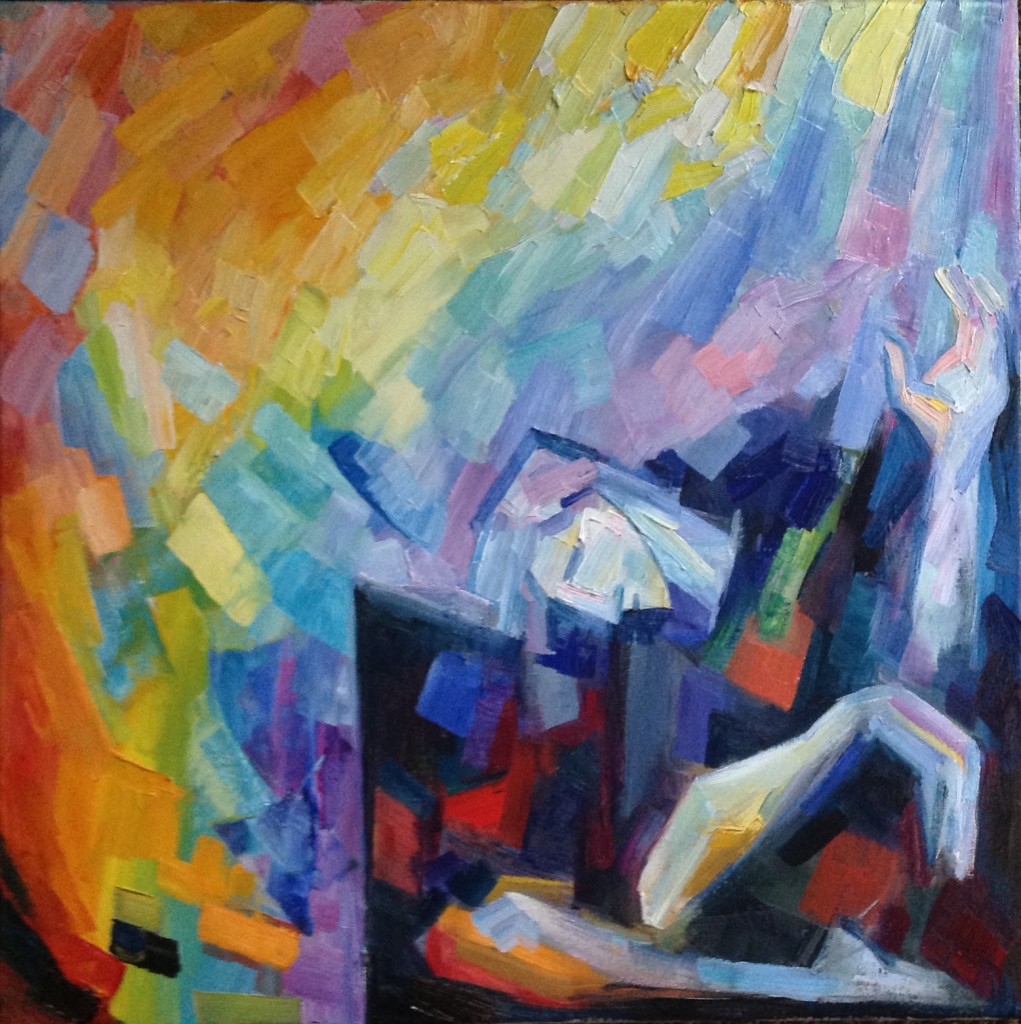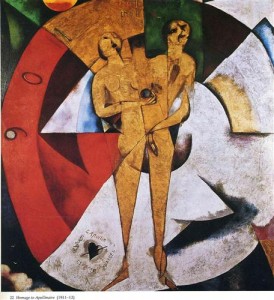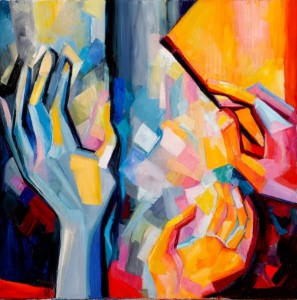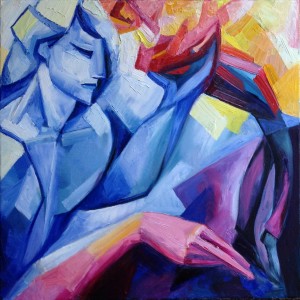 Today’s painting session, a roller caster of ups and downs, but I believe the painting is as complete as it can be at this stage. Perhaps more important have been the accompanying shifts and insights into the meaning of the sonnet.
Today’s painting session, a roller caster of ups and downs, but I believe the painting is as complete as it can be at this stage. Perhaps more important have been the accompanying shifts and insights into the meaning of the sonnet.

There is an additional, more hidden, source for this painting (apart from Picasso’s musician): Chagall’s homage to Apollinaire. This understanding crossed my mind a couple of days ago, so I looked at Chagall’s painting this morning. There are two shared ideas, which might appear quite disconnected from one another: the dominance of a circle in the composition, and the explicit tension between duality and unity.
All in all, the painting of this sonnet turned out to be a private exercise in dissolving and overcoming dualities.
It started with my struggle with two layers of the sonnet — one corresponding to its overt, “literal” meaning, and the second, “deeper” one: the speaker recording himself lying, in a futile attempt to please the person he is angry with. A couple of days ago, I reread Helen Vendler’s analysis of this sonnet, and was struck by the complete absence of this second layer in her interpretation. At the time, I decided to disregard this, since it was so obviously incompatible with what I perceived as the core of the sonnet, the recorded experience of falling into the constraints of smaller, angrier self.
But it didn’t quite work, did it? Understood too straightforwardly, too forcefully, it led me to what can be justly called gross painting (mentioned in the sonnet): too direct, too superficial, garish, gaudy.
What I needed to move away from that was to acknowledge that both layers are there, and that they cannot exist one without the other. Stressing their difference — without recognising the underlying unity — is but a deeper level falsehood, another misplaced duality. The same voice, the same being both falls from the heaven and generates the heaven. There is no choice of one over the other, and if imposed, it leads to another “gross painting” (remarkably, I had nearly forgotten the couplet, with its mention of “gross paintings” in the process).

Dissolving the contrast (while still keeping it alive, in a sense) was the essence of today’s work on the painting: in colour, in the overall shared compositional movement, and — on the purely representational level — in the change of the hand gesture (which links this painting to sixty fifth sonnet painting). And then something strange happened — quite unforeseen, unplanned: the dissolution of the duality between the poet and the muse.
 In the future sixteen-paintings composition, this painting will be directly below the seventy eighth one, with its huge Muse supporting the poet in the sky. I assumed this one would then “read” as the defeated poet having been thrown down — but by the end of the day, this painting’s figure palpably identified itself with the muse. In a sense, it is now both the poet and the muse. This was the resolution of the painting’s (and the sonnet’s) conflict.
In the future sixteen-paintings composition, this painting will be directly below the seventy eighth one, with its huge Muse supporting the poet in the sky. I assumed this one would then “read” as the defeated poet having been thrown down — but by the end of the day, this painting’s figure palpably identified itself with the muse. In a sense, it is now both the poet and the muse. This was the resolution of the painting’s (and the sonnet’s) conflict.